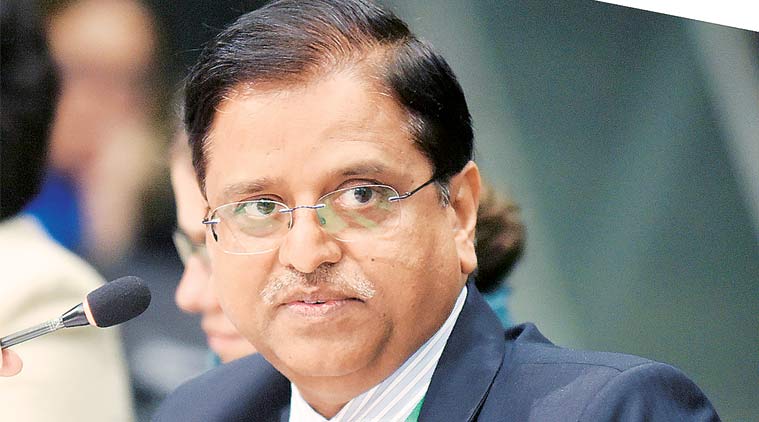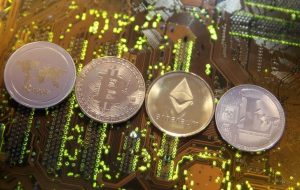Trade setup for Feb 10: Will Nifty50 take out 17,500 soon? Check out key market cues before Thursday’s session
Summary
Trade setup for Thursday, February 10: There may be more upside in the Nifty50 as the market does not appear to be expecting any negative cues from the RBI, say experts. Here’s what the technical charts suggest for the coming session on Dalal Street.
Indian equity benchmarks extended gains to a second straight day on Wednesday, led by financial, IT and auto shares, and heavyweights such as Reliance Industries and Bharti Airtel.
All eyes are now on the outcome of the RBI’s policy review.
What do the charts suggest for Dalal Street now?
The Nifty50 has formed a green candle after a dragonfly doji pattern on the daily chart, suggesting a short-term bullish reversal, according to Rupak De, Senior Technical Analyst at LKP Securities.
“Immediate resistance is visible at 17,530, a decisive move above which may induce a rally towards the recent peak of 17,775-17,800. Support is placed at 17,315,” he said.
More upside on cards?
The 50-scrip index’s breakout formation indicates the continuation of an uptrend in the near future, said Shrikant Chouhan, Head of Equity Research (Retail) at Kotak Securities. It is holding a higher bottom formation on the intraday chart in a broadly positive sign, he said.
“For traders, 17,365 would be the trend decider level, above which, the index could move up to 17,550-17,625 levels. However, if it trades below 17,350, the strong possibility of quick correction up to 17,300-17,240 is not ruled out,” he said.
Here are key things to know about the market before the February 10 session:
SGX Nifty
At 7:47 am on Thursday, Singapore Exchange (SGX) Nifty futures — an early indicator of the Nifty index — were up 32.5 points or 0.2 percent at 17,516.5, suggesting a positive opening ahead of the RBI policy statement.
Global markets
Equities in other Asian markets were a mixed bag on Thursday, as investors awaited the release of US consumer inflation data due later in the day. MSCI’s broadest index of Asia Pacific shares outside Japan was up 0.2 percent at the last count.
Japan’s Nikkei 225 was up 0.1 percent, but China’s Shanghai Composite down 0.1 percent and Hong Kong’s Hang Seng down 0.3 percent.
S&P 500 futures were down 0.3 percent. On Wednesday, the three main Wall Street indices surged 0.9-2.1 percent boosted by a surge in growth stocks thanks to a pause in rising interest rates. Upbeat earnings reports also aided investor sentiment.
What to expect on Dalal Street
Analysts await the RBI’s mid-quarter policy outcome for near-term direction.
Nagaraj Shetti, Technical Research Analyst at HDFC Securities, believes the short-term trend of the Nifty has reversed to be positive. He sees chances of further upside towards 17,600-17,700 levels in the coming few sessions, with immediate support at 17,350.
“However, the overall chart pattern suggests the probability of weakness from the lower top formation below 17,800,” he said.
Independent technical analyst Manish Shah is of the view the market may not be expecting anything negative from the RBI.
“The Nifty offers a good risk-reward ratio at current levels… It should see a rally to 17,670-17,700, which, once surpassed, should lead to levels of 18,050-18,100,” he said.
Key levels to watch out for
| Index | Immediate resistance | Immediate support |
| Nifty50 | 17,550 | 17,300 |
| Nifty Bank | 38,900 | 38,000 |
Exchange data shows the accumulation of maximum call open interest at the strike price of 18,000, with 1.5 lakh contracts, and 17,700, with 1.4 lakh contracts. On the other hand, the maximum put open interest is placed at 17,000 and 17,400, with 1.2 lakh contracts each.
This suggests major resistance at 17,700 and 18,000, and meaningful support only at 17,400.
Here are five stocks that saw an increase in open interest as well as price, suggesting a build-up of long positions:
| Symbol | Current OI | CMP | Price change (%) | OI change (%) |
| CROMPTON | 29,13,900 | 407.5 | 0.22% | 21.14% |
| COALINDIA | 3,75,18,600 | 164.15 | 4.65% | 17.14% |
| HDFC | 1,85,26,500 | 2,453.75 | 1.21% | 14.87% |
| MARUTI | 26,49,200 | 8,931.95 | 3.99% | 13.58% |
| BOSCHLTD | 1,29,050 | 16,300.10 | 1.30% | 10.81% |
Long unwinding
| Symbol | Current OI | CMP | Price change (%) | OI change (%) |
| BANKBARODA | 14,77,59,300 | 115 | -2.67% | -2.89% |
| ITC | 17,95,93,600 | 225.75 | -0.40% | -0.93% |
| IDEA | 65,63,20,000 | 10.8 | -0.92% | -0.25% |
(Decrease in open interest as well as price)
Short-covering
| Symbol | Current OI | CMP | Price change (%) | OI change (%) |
| SYNGENE | 10,92,250 | 589.05 | 3.12% | -6.46% |
| NAVINFLUOR | 5,37,075 | 4,046.90 | 0.17% | -5.66% |
| LTTS | 7,35,400 | 4,608.20 | 4.14% | -5.63% |
| AARTIIND | 31,45,000 | 1,013 | 4.29% | -3.97% |
| AUBANK | 27,16,500 | 1,369.20 | 2.49% | -3.13% |
(Increase in price and decrease in open interest)
Short build-up
| Symbol | Current OI | CMP | Price change (%) | OI change (%) |
| GUJGASLTD | 19,36,250 | 660 | -0.95% | 34.02% |
| GODREJCP | 40,19,500 | 860.55 | -2.34% | 19.02% |
| POWERGRID | 2,41,31,825 | 207.1 | -0.14% | 11.25% |
| INDUSTOWER | 90,18,800 | 252 | -0.57% | 8.23% |
| ONGC | 3,72,44,900 | 160.7 | -2.04% | 8.10% |
(Increase in open interest and decrease in price)
52-week highs
Seven stocks in the BSE 500 basket hit 52-week highs, including Maruti Suzuki, Bank of Baroda, Nalco, GNFC and Cholamandalam Investment.
52-week lows
IGL, MGL, AstraZeneca, Kansai Nerolac and Jubilant Pharmova were among the seven stocks that hit 52-week lows.
Volatility gauge
NSE’s India VIX index — which gauges the expectation of volatility in the market — cooled off 5.7 percent to 18.6 on Wednesday, its biggest dip in a week.
Disclaimer: Network18, the parent company of CNBCTV18.com, is controlled by Independent Media Trust, of which Reliance Industries is the sole beneficiary.
How Nifty fared in Budget week | Catch CNBC-TV18’s budget coverage here

Elon Musk forms several ‘X Holdings’ companies to fund potential Twitter buyout
3 Mins Read
Thursday’s filing dispelled some doubts, though Musk still has work to do. He and his advisers will spend the coming days vetting potential investors for the equity portion of his offer, according to people familiar with the matter









 Listen to the Article
Listen to the Article  Daily Newsletter
Daily Newsletter













